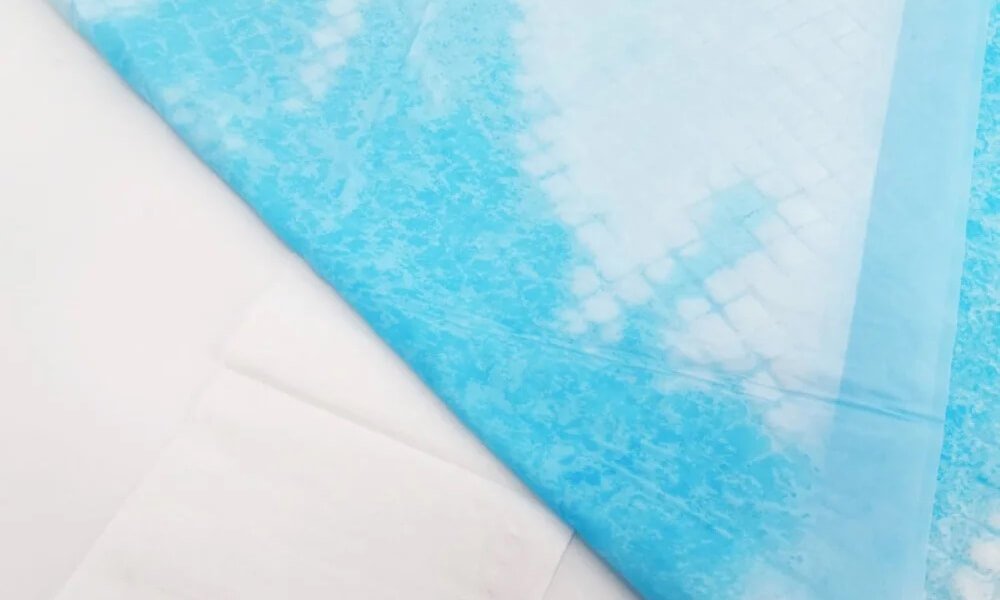Serviettes hygiéniquesLes alèses, souvent appelées alèses de lit ou chux, représentent un élément essentiel du maintien de l'hygiène dans divers environnements de soins. Destinés à l'origine aux hôpitaux, ces alèses ont dépassé leur cadre initial et sont aujourd'hui largement utilisées dans les foyers, les établissements de garde d'enfants et les établissements pour personnes âgées. Leur objectif fondamental est de protéger la literie, les meubles et toute surface qu'ils recouvrent de l'humidité et des taches, ce qui est particulièrement utile pour les personnes souffrant d'incontinence ou d'autres problèmes médicaux nécessitant une telle protection.
La genèse des alèses remonte à l'époque où les établissements de santé cherchaient des moyens efficaces pour maintenir l'hygiène et le confort des patients alités. Cette nécessité a donné naissance à des formes rudimentaires d'alèses, qui ont depuis évolué vers des modèles plus sophistiqués et plus conviviaux. Les alèses modernes sont non seulement plus efficaces en termes de protection, mais elles prennent également en compte des aspects tels que la santé et le confort de la peau, illustrant ainsi la progression d'articles purement fonctionnels vers des articles qui améliorent l'expérience globale des soins.
1. Types de sous-vêtements
La dichotomie des serviettes hygiéniques en catégories jetables et réutilisables permet de comprendre leur application et leur utilité. Les serviettes jetables, souvent fabriquées à partir de matériaux absorbants tels que la pâte en flocons et dotées d'un support imperméable, sont conçues pour un usage unique. Elles sont particulièrement appréciées dans les contextes où des changements rapides sont nécessaires ou lorsque l'hygiène impose des remplacements fréquents. À l'inverse, les serviettes hygiéniques réutilisables sont fabriquées à partir de tissus durables comme le coton ou le polyester, souvent avec une couche imperméable, et sont conçues pour résister à de multiples lavages et utilisations. Elles sont conçues pour résister à de multiples lavages et utilisations, ce qui en fait une option rentable et plus respectueuse de l'environnement à long terme.
Chaque type d'alèse existe en différentes tailles et différents niveaux d'absorption, ce qui permet de répondre à un large éventail de besoins. Dans le cas des chaises ou des petites surfaces, les petites alèses conviennent mieux, tandis que les grandes couvrent les lits ou les grandes surfaces. Qu'est-ce qui est préférable, les serviettes jetables ou les serviettes réutilisables ? Cela dépend souvent des préférences individuelles, des applications de soins particulières et des considérations environnementales.
2. Applications pratiques des serviettes hygiéniques
Les alèses ont trouvé leur place non seulement dans le milieu médical, mais aussi dans le domaine des soins à domicile et de l'usage personnel. Dans les hôpitaux, les cliniques et les autres établissements de soins, elles sont indispensables pour fournir une surface hygiénique aux patients, en particulier à ceux qui sont alités ou qui subissent des interventions nécessitant une protection supplémentaire. Leur capacité à absorber les liquides et à protéger la literie réduit considérablement le risque de contamination et facilite le maintien de la propreté.
À domicile, les alèses offrent d'immenses avantages, en particulier pour les personnes souffrant d'incontinence, ayant des problèmes de mobilité ou nécessitant des soins supplémentaires. Elles apportent une couche de protection à la literie et au mobilier, ce qui les rend inestimables pour les soignants et les membres de la famille qui s'efforcent de maintenir un environnement de vie propre et digne. En outre, les alèses sont de plus en plus reconnues pour leur rôle dans les soins médicaux à domicile, soutenant ainsi la tendance croissante au traitement et au rétablissement à domicile.
3. Principales caractéristiques des serviettes hygiéniques de haute qualité
L'efficacité des alèses dépend en grande partie de leur capacité d'absorption et de la qualité des matériaux utilisés. Les alèses à forte capacité d'absorption sont capables de gérer des quantités importantes de liquide, une caractéristique cruciale pour les utilisateurs souffrant d'incontinence sévère ou en soins post-opératoires. Les matériaux utilisés dans ces alèses jouent un rôle essentiel dans leur fonctionnalité. Les couches absorbantes sont souvent composées de polymères capables de retenir plusieurs fois leur poids en liquide, tandis que les couches extérieures sont généralement fabriquées dans des tissus doux et agréables à la peau pour garantir le confort.
Le confort et la santé de la peau sont primordiaux, en particulier pour les utilisateurs qui utilisent des alèses pendant de longues périodes. Des alèses mal conçues peuvent entraîner des irritations cutanées, une gêne et, dans les cas les plus graves, des escarres. C'est pourquoi les alèses de haute qualité ne se concentrent pas uniquement sur l'absorption, mais privilégient également des caractéristiques telles que la respirabilité, la douceur et un toucher délicat sur la peau, garantissant ainsi que la protection ne se fait pas au détriment du confort et de la santé.
4. Le rôle des sous-vêtements dans la prise en charge de l'incontinence
L'incontinence, un problème auquel sont confrontées de nombreuses personnes de tous âges, peut avoir un impact significatif sur la qualité de vie d'un individu. Les alèses jouent un rôle essentiel dans la gestion de cette condition, en offrant une solution pratique et digne pour protéger la literie, les meubles et d'autres surfaces. En absorbant les fuites et les liquides renversés, les alèses contribuent à maintenir l'hygiène et le confort, ce qui est crucial pour les personnes souffrant d'incontinence.
Il est essentiel de comprendre l'incontinence pour apprécier le rôle des alèses. Il s'agit d'une affection qui peut avoir diverses causes, notamment les changements liés à l'âge, les conditions médicales ou les effets post-chirurgicaux. Les serviettes hygiéniques constituent un moyen discret et efficace de gérer les symptômes, permettant aux individus de mener une vie plus confortable et plus confiante. Elles protègent non seulement les surfaces, mais réduisent également la charge de travail des soignants et préservent la dignité des personnes concernées.
5. Serviettes hygiéniques dans les crèches
Les alèses sont une bénédiction dans le domaine de la puériculture, en particulier pour les nourrissons et les enfants en bas âge. Elles constituent un outil essentiel dans les crèches, les garderies et les foyers, offrant une solution hygiénique et facile à nettoyer pour les changements de couches, l'apprentissage de la propreté et d'autres incidents. L'utilisation des alèses dans ces environnements ne vise pas seulement à maintenir la propreté, mais aussi à garantir un environnement sain pour les jeunes enfants, qui sont plus sensibles aux infections et aux irritations cutanées.
Leur rôle dans le maintien de l'hygiène ne se limite pas à absorber les liquides renversés ou les fuites. Les alèses protègent également les matelas et les meubles de l'usure due aux nettoyages fréquents, prolongeant ainsi leur durée de vie et garantissant un environnement hygiénique pour les activités et le repos des enfants. La facilité de changement et d'élimination ou de lavage de ces alèses en fait un choix pratique pour les soignants et les parents très occupés.
6. Impact environnemental et durabilité
L'impact environnemental des serviettes jetables est une préoccupation importante, en particulier à la lumière de la prise de conscience et de l'importance croissantes de la durabilité. Ces serviettes, souvent fabriquées à partir de matériaux non biodégradables, contribuent à l'accumulation de déchets dans les décharges, d'où la recherche d'alternatives plus respectueuses de l'environnement. L'industrie a réagi en développant des alèses fabriquées à partir de matériaux biodégradables ou dont l'empreinte écologique est plus faible, marquant ainsi une évolution vers des pratiques plus durables.
Les avancées dans le domaine des produits d'alèses écologiques comprennent des innovations en matière de polymères biodégradables et l'utilisation de matériaux recyclés. Ces développements ne répondent pas seulement à des préoccupations environnementales, mais aussi à une base de consommateurs de plus en plus nombreux qui privilégient la durabilité. Le défi consiste à trouver un équilibre entre la nécessité d'une protection efficace contre l'humidité et la responsabilité environnementale, une tâche à laquelle l'industrie continue de s'atteler grâce à la recherche et à l'innovation.
7. Choisir l'alèse adéquate
Pour choisir la bonne alèse, il faut tenir compte de divers facteurs tels que le pouvoir absorbant, la taille, le matériau et les besoins spécifiques de l'utilisateur. Par exemple, les alèses à fort pouvoir absorbant sont préférables pour la nuit ou pour les personnes souffrant d'incontinence sévère, tandis que les alèses plus petites et moins absorbantes peuvent suffire pour les fuites occasionnelles ou comme mesure de précaution. Le matériau de l'alèse joue également un rôle crucial : certains utilisateurs préfèrent la douceur et le confort du coton. D'autres, en revanche, privilégieront la durabilité et la longévité des tissus synthétiques.
Il est également important de tenir compte de l'environnement dans lequel l'alèse sera utilisée. Dans l'environnement animé d'un établissement médical, l'utilisation d'alèses à usage unique devient souvent un choix pragmatique, surtout si l'on considère le flux rapide des patients et les protocoles d'hygiène rigoureux. En revanche, pour un usage à domicile, en particulier pour les soins de longue durée, les alèses réutilisables peuvent s'avérer plus économiques et plus respectueuses de l'environnement. Les conseils du personnel soignant et les préférences personnelles doivent également être pris en compte lors de la prise de décision.
8. Entretien et soins des serviettes hygiéniques réutilisables
La longévité et l'efficacité des alèses réutilisables dépendent d'une maintenance et d'un entretien appropriés. Un nettoyage et une désinfection réguliers sont essentiels pour garantir que ces alèses restent hygiéniques et fonctionnelles. La plupart des alèses réutilisables sont conçues pour résister à de multiples lavages. Il est toutefois important de suivre les instructions du fabricant concernant les températures de lavage et les détergents afin d'éviter d'endommager les couches absorbantes et le support imperméable.
Un séchage adéquat est également essentiel pour préserver l'intégrité de l'alèse. Les températures élevées détruisent la couche imperméable, c'est pourquoi il est souvent recommandé de sécher à l'air libre ou à basse température. Des contrôles réguliers des signes d'usure, tels que l'amincissement du tissu ou la détérioration de la couche imperméable, peuvent aider à déterminer quand il est temps de remplacer l'alèse. Un entretien adéquat permet non seulement de prolonger la durée de vie de l'alèse, mais aussi de s'assurer qu'elle continue à fournir une protection efficace.
9. Tendances futures et innovations dans la technologie des serviettes hygiéniques
Le marché des alèses est en constante évolution, avec des innovations visant à améliorer le confort, l'efficacité et la durabilité environnementale. Les technologies émergentes dans la conception des alèses comprennent l'utilisation de polymères super-absorbants qui offrent une plus grande capacité d'absorption avec moins d'encombrement et des tissus intelligents qui peuvent indiquer quand une alèse a besoin d'être changée. Ces avancées sont motivées par le double objectif d'améliorer l'expérience de l'utilisateur et de réduire l'impact sur l'environnement.
Les progrès de la technologie des alèses pourraient s'orienter vers l'amélioration des matériaux respectueux de l'environnement et l'intégration de technologies intelligentes pour accroître leur utilité. Les innovations pourraient se concentrer sur la création d'alèses plus fines et plus discrètes qui ne compromettent pas la capacité d'absorption ou sur le développement de matériaux qui offrent une meilleure respirabilité et un plus grand confort pour la peau. À mesure que la demande de produits de santé efficaces et durables augmente, la technologie des alèses devrait continuer à évoluer pour relever ces défis.
10. Conclusion : Le rôle intégral des serviettes hygiéniques dans les soins et l'hygiène
Les alèses jouent un rôle essentiel dans divers aspects des soins et de l'hygiène. Elles offrent protection, confort et dignité aux personnes de tous âges et de tous besoins, qu'il s'agisse de personnes souffrant d'incontinence, de nourrissons ou de personnes âgées. Leur polyvalence et leur praticité les rendent indispensables dans les établissements de soins, à domicile et dans les structures de garde d'enfants.
Cet article a exploré les différents types d'alèses, leurs applications, leurs principales caractéristiques et les éléments à prendre en compte pour les choisir et les entretenir. Il a également abordé les impacts environnementaux et les tendances futures de la technologie des alèses. À mesure que nous avançons, il est clair que les alèses continueront d'être un élément essentiel de la fourniture de soins et du maintien de l'hygiène, évoluant en fonction des besoins des utilisateurs et de l'environnement.

